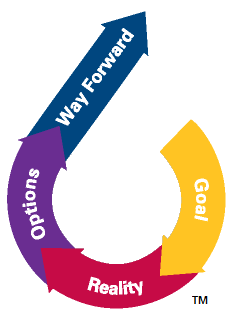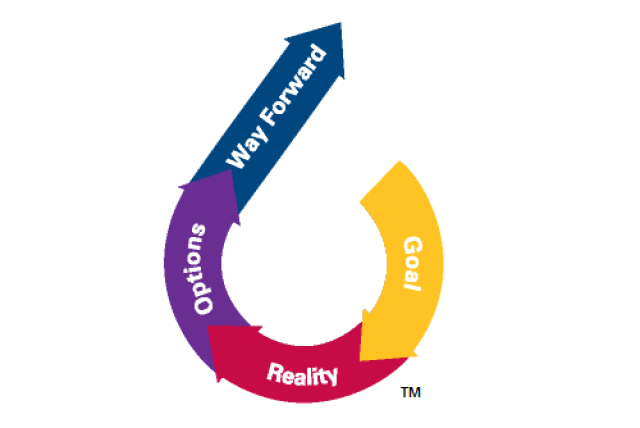As a leader it is extremely important not only for you to be able to quickly and efficiently move past major obstacles, but to help others move past them as well. The GROW Model, as developed by Alan Fine, provides a simple framework for doing both. Here we’ll look at how to use it in a coaching situation.
 GOAL: The first step is to define the goal. You want to make sure that either you and the team member you are coaching come up with the goal together or they create it completely on their own. This will help keep them involved in the process and get them to invest in finding a resolution. The accountability and responsibility for solving these issues should always stay with the team member, you are simply there to help them out along the way. Always make sure that their goal is S.M.A.R.T. (Specific, Measurable, Attainable, Realistic and Time-bound).
GOAL: The first step is to define the goal. You want to make sure that either you and the team member you are coaching come up with the goal together or they create it completely on their own. This will help keep them involved in the process and get them to invest in finding a resolution. The accountability and responsibility for solving these issues should always stay with the team member, you are simply there to help them out along the way. Always make sure that their goal is S.M.A.R.T. (Specific, Measurable, Attainable, Realistic and Time-bound).
REALITY: Once a goal is established, you should look at their current reality. Make sure that the team member is open and honest about the reality of their situation. Finding a good solution to the problem can only come once you have both acknowledged the true starting point, you don’t want to miss any information that could change or reduce the possible solutions. Discussing the reality also includes discussing any ways in which they have already tried to resolve the problem, which will remove those methods as possibilities in the options stage.
OPTIONS: When you have fully established the team member’s reality, start brainstorming options with them. Have them start out by describing what they would do to solve this issue if they lived in a perfect world. No idea is too crazy or impossible. This will help them open up and not be afraid to throw out solutions that may end up being the perfect option. You can also add to the list of options but be sure to wait until they have exhausted their own ideas before you chime in, this will eliminate you telling them something they already know and helps keep the accountability on them.
WAY FORWARD: After they have made a list of possible options for resolving the issue, ask them to pick a few that they see as the best way forward. This should also be S.M.A.R.T. Make sure that they see these solutions as attainable and realistic for themselves and be sure that they are excited about putting them into action. If they have been leading the discussion from the beginning they will be more likely to actually take these steps and accomplish the goal they created at the start.
